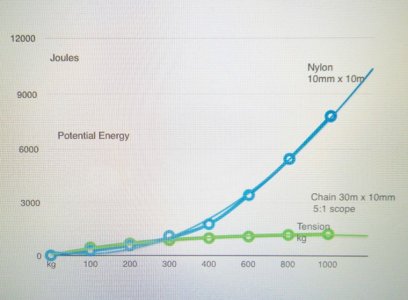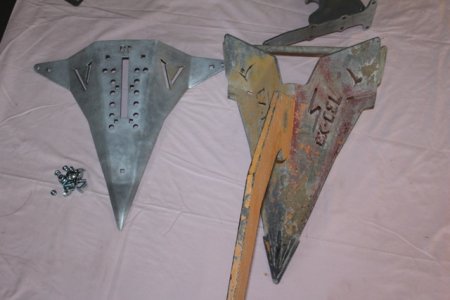Tranona
Well-known member
Not sure where you get that from. Nowhere in the Rocna guide jimmygreen.com/content/205-rocna-and-vulcan-anchor-size-guide does it say that you need a 20kg - nor even a 15kg if you plan to sail within the parameters they use for their sizing (which you said in post 125 you did). On that basis 15kg is "oversize" and 20kg grossly oversize. The boat you are quoting has the same dimensions as mine so I am faced with the same choice.The boat in question is 10 metres in round figures. It displaces over 5 tons. The suggested anchor size from Rocna is 15 - 20kg for a boat between 5 and 9 tons. Your choice depends both on the boat and your proposed use, as Green says:
"Consider the worst-case scenario for your anticipated Anchoring - this will dictate whether you go for the minimum required or the ocean cruising approach"
Of course if you don't believe that performance increases with size, you are free to choose the smallest you think you can get away with.
.
There is no dispute that a larger anchor of the same design will have higher ultimate holding power. That is only part of the story as the key variable is whether the boat in question can supply sufficient load to access that higher holding power. Plenty of evidence, both theoretical and empirical that shows loads applied by a boat do not reach, let alone exceed that required to reach the ultimate holding power of the recommended anchor sizes.
This is reflected in the advice given by manufacturers that a larger size anchor may be considered if you plan to use it in conditions outside those used in the sizing recommendation, or your boat is marginal in size/weight or type (multihull vs mono or sailboat vs motorboat).
Nothing to do with "smallest you think you can get away with" - it is understanding what is involved and following the recommendations to choose the anchor that suits your boat and type of sailing. For the vast majority that is following the makers guidelines.
So, with the exception of any reference to a 20kg anchor we are in agreement.


